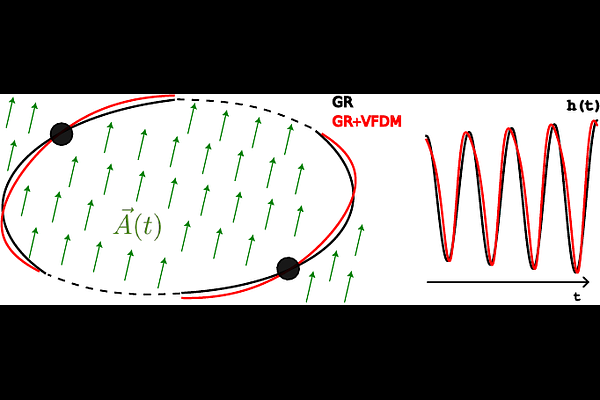Gravitational waves of quasi-circular, inspiraling black hole binaries in an ultralight vector dark-matter environment

Gravitational waves of quasi-circular, inspiraling black hole binaries in an ultralight vector dark-matter environment
Tomás Ferreira Chase, Diana López Nacir, Nicolás Yunes
AbstractThe gravitational waves emitted by massive black hole binaries can be affected by a variety of environmental effects, which, if detected, could inform astrophysics and cosmology. We here study how gravitational waves emitted by black holes in quasi-circular orbits are affected by the presence of an ultra-light, vector-field, dark-matter environment that is minimally coupled to the binary. This dark-matter environment induces oscillatory gravitational potentials that perturb the orbit of the binary, leaving an imprint in the binary's binding energy, and thus, on the gravitational waves emitted. We here compute the effect of this environment on the gravitational-wave phase using the stationary-phase approximation within the post-Newtonian formalism. We then perform a Fisher analysis to estimate the detectability of this environmental effect with a four-year LISA observation, focusing on vector fields with ultra-light masses in the $(10^{-19}, 10^{-16}) \; \rm{eV}$ range. We conclude that the observation of such gravitational waves with space-borne interferometers, like LISA, could yield a measurement or constraint on local, vector dark-matter environments, provided the dark-matter density is larger than roughly $10^{14} \rm{M}_\odot/{\rm{pc}}^3$.